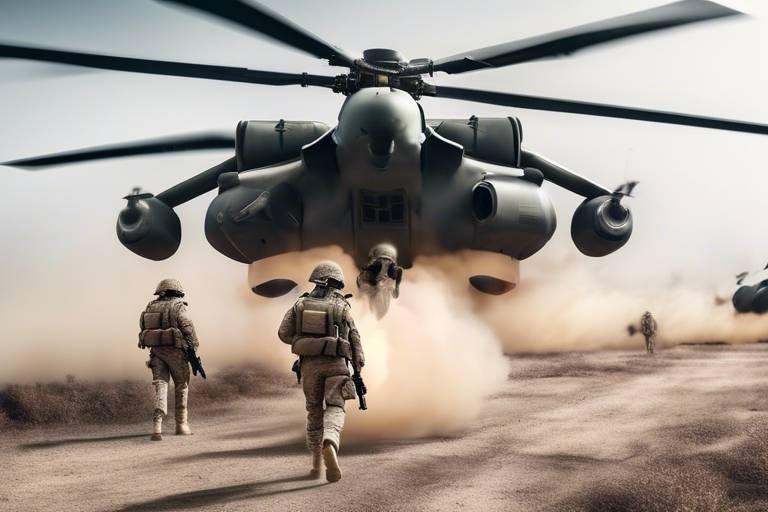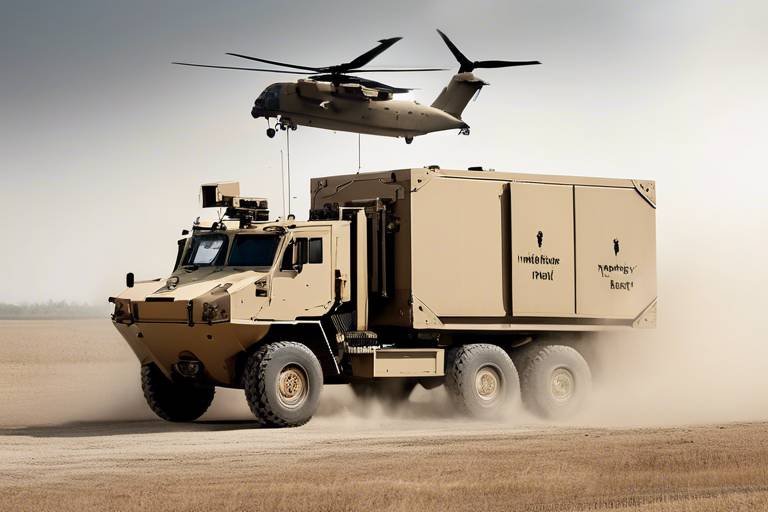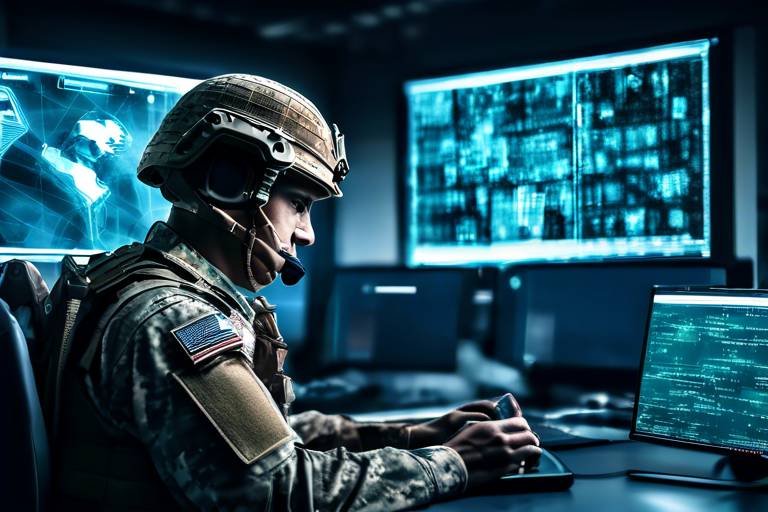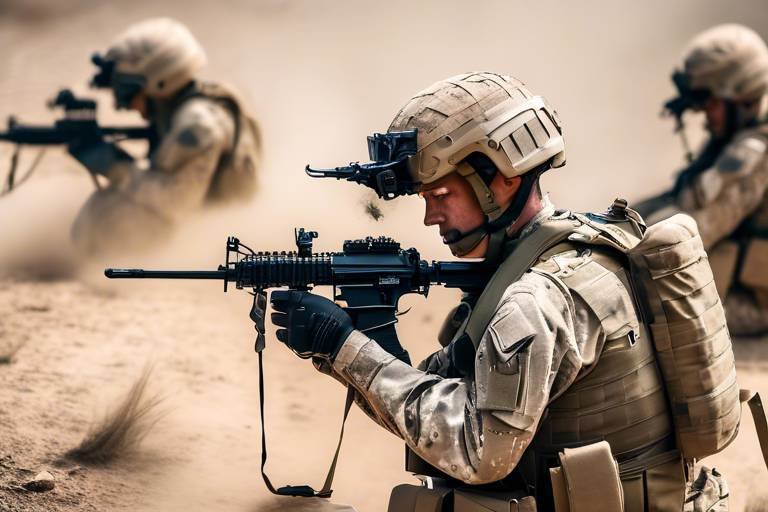Innovations in Military Transport Technologies
In today's rapidly evolving world, military transport technologies are at the forefront of enhancing operational effectiveness and efficiency. As conflicts become more complex and the demand for rapid response increases, the military is turning to cutting-edge solutions that not only streamline logistics but also bolster operational readiness. From the skies to the seas, and across rugged terrains, innovations are transforming how military forces deploy, supply, and maneuver their assets.
The integration of advanced technologies into military transport is akin to upgrading from a bicycle to a high-speed motorcycle. It’s all about speed, efficiency, and adaptability. As we delve into the various domains of military transport, we’ll explore how these innovations are reshaping the battlefield landscape, making it easier for forces to respond to threats and maintain a strategic advantage.
One of the most significant leaps has been in aerial transport. Drones and advanced cargo aircraft are not just buzzwords; they are game-changers in how supplies and troops are moved. Imagine a scenario where a drone can deliver critical supplies to troops in a remote location, bypassing traditional road routes that may be compromised. This is the reality that modern military operations are embracing, allowing for unprecedented speed and efficiency.
But it’s not just about the air. Ground transport technologies are also undergoing a remarkable transformation. The introduction of autonomous ground vehicles is revolutionizing logistics in combat zones. These vehicles can navigate through hostile environments without risking human lives, which is a significant advantage. Picture a convoy of autonomous trucks delivering supplies under the cover of night, evading detection while ensuring that troops have what they need to succeed. This level of operational security and efficiency is invaluable.
However, the road to implementing these technologies is not without its bumps. There are challenges to overcome, such as technological limitations and the need for robust cybersecurity measures. Just like a high-tech vehicle needs a reliable fuel source, these innovations require a solid infrastructure to support them. The military must ensure that they have the necessary protocols in place to protect these systems from cyber threats.
As we look ahead, it's clear that the future of military transport is bright. With ongoing advancements in maritime transport technologies, such as amphibious vehicles and naval cargo systems, the ability to project power across oceans is becoming more sophisticated. Amphibious assault vehicles, for instance, enable forces to transition seamlessly from sea to land, providing unmatched versatility in coastal operations.
In conclusion, the innovations in military transport technologies represent a paradigm shift in how armed forces operate. From aerial to ground and maritime transport, these advancements are not just about keeping pace with modern warfare; they are about ensuring that military forces are always prepared to respond effectively to any challenge. As we continue to explore these technologies, one thing is certain: the battlefield of the future will be shaped by the innovations of today.
- What are the main advancements in military transport technologies?
Recent advancements include the use of drones for aerial supply delivery, autonomous ground vehicles for logistics, and enhanced naval systems for maritime operations. - How do autonomous vehicles improve military logistics?
Autonomous vehicles reduce human risk, improve efficiency, and can operate in hazardous environments, allowing for safer transport of supplies and personnel. - What challenges do military transport technologies face?
Challenges include technological limitations, regulatory hurdles, and the need for strong cybersecurity measures to protect against threats. - Why are real-time tracking systems important?
They enhance visibility and control over military assets, ensuring timely delivery of supplies and equipment, which is crucial for operational readiness.
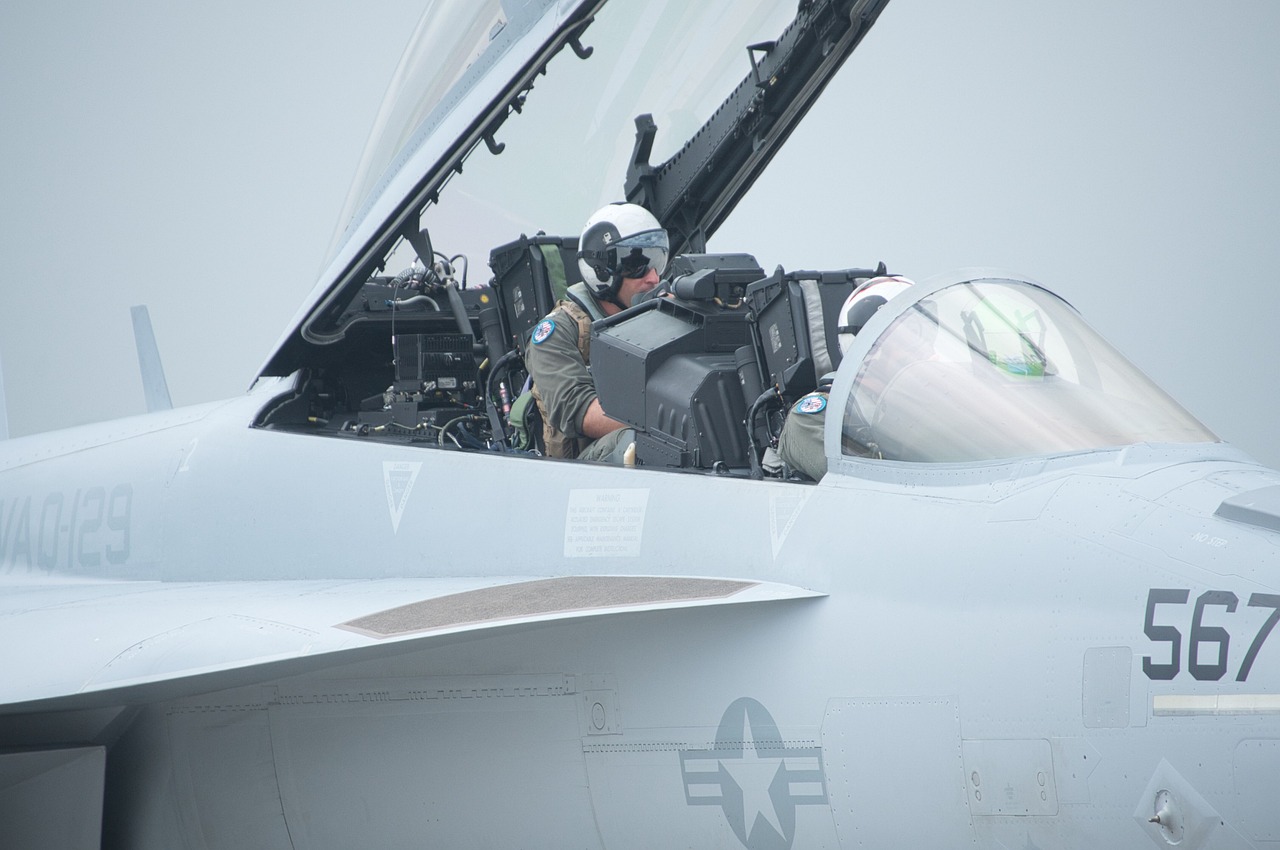
Advancements in Aerial Transport
Aerial transport technologies are soaring to new heights, quite literally! The military is experiencing a revolution in how it moves personnel, equipment, and supplies across various terrains. With the advent of drones and advanced cargo aircraft, the speed and efficiency of military operations have dramatically improved. Imagine being able to deliver critical supplies to troops stationed in remote locations within minutes instead of hours. This is no longer a distant dream, but a reality thanks to these innovations.
One of the most significant advancements in this field is the use of unmanned aerial vehicles (UAVs). These drones are not just for surveillance anymore; they are now capable of transporting medical supplies, ammunition, and even food to troops in the field. The ability to bypass traditional supply routes that may be dangerous or compromised is a game-changer. Drones can navigate through hostile environments, delivering essential resources without putting human lives at risk.
Moreover, advanced cargo aircraft have been developed to support large-scale operations. These aircraft are equipped with cutting-edge technology that allows for rapid loading and unloading of cargo, making them invaluable during time-sensitive missions. For instance, the Lockheed Martin C-130 Hercules and the Airbus A400M are prime examples of military aircraft designed for versatility and efficiency. They can operate from short and unpaved airstrips, which is crucial for reaching troops in austere environments.
| Aircraft Model | Payload Capacity | Range | Unique Features |
|---|---|---|---|
| Lockheed Martin C-130 Hercules | Up to 45,000 lbs | 2,400 miles | Short takeoff and landing capabilities |
| Airbus A400M | Up to 37,000 lbs | 8,700 miles | Ability to operate in austere conditions |
These advancements are not just about speed; they are also about precision. The integration of advanced navigation systems and artificial intelligence in aerial transport has enhanced the accuracy of deliveries. This means that supplies can be dropped exactly where they are needed, reducing waste and ensuring that troops have what they need when they need it. Think of it as having a personal delivery service that knows exactly where to drop off your package, even in the most challenging of circumstances!
Furthermore, the military is also exploring the potential of hybrid aircraft that can transition between flight and vertical takeoff and landing (VTOL). This capability would allow for even greater flexibility in operations, enabling military forces to deploy resources in a variety of environments, from urban settings to remote wilderness areas. The future of aerial transport in the military is not just about flying higher, but also about flying smarter.
As we look to the future, it’s clear that advancements in aerial transport technologies will continue to play a pivotal role in military logistics. The combination of speed, efficiency, and precision is essential for maintaining operational readiness in an ever-evolving battlefield. With these innovations, the military can ensure that its forces are well-equipped and prepared to respond to any challenge that may arise.
- What are drones used for in military transport? Drones are primarily used for delivering supplies, conducting surveillance, and providing real-time intelligence.
- How do advanced cargo aircraft improve military logistics? They enhance speed and efficiency in transporting large volumes of cargo, especially in remote or hostile environments.
- What is the future of aerial transport technologies in the military? The future includes more autonomous systems, hybrid aircraft, and advanced navigation technologies for improved operational capabilities.
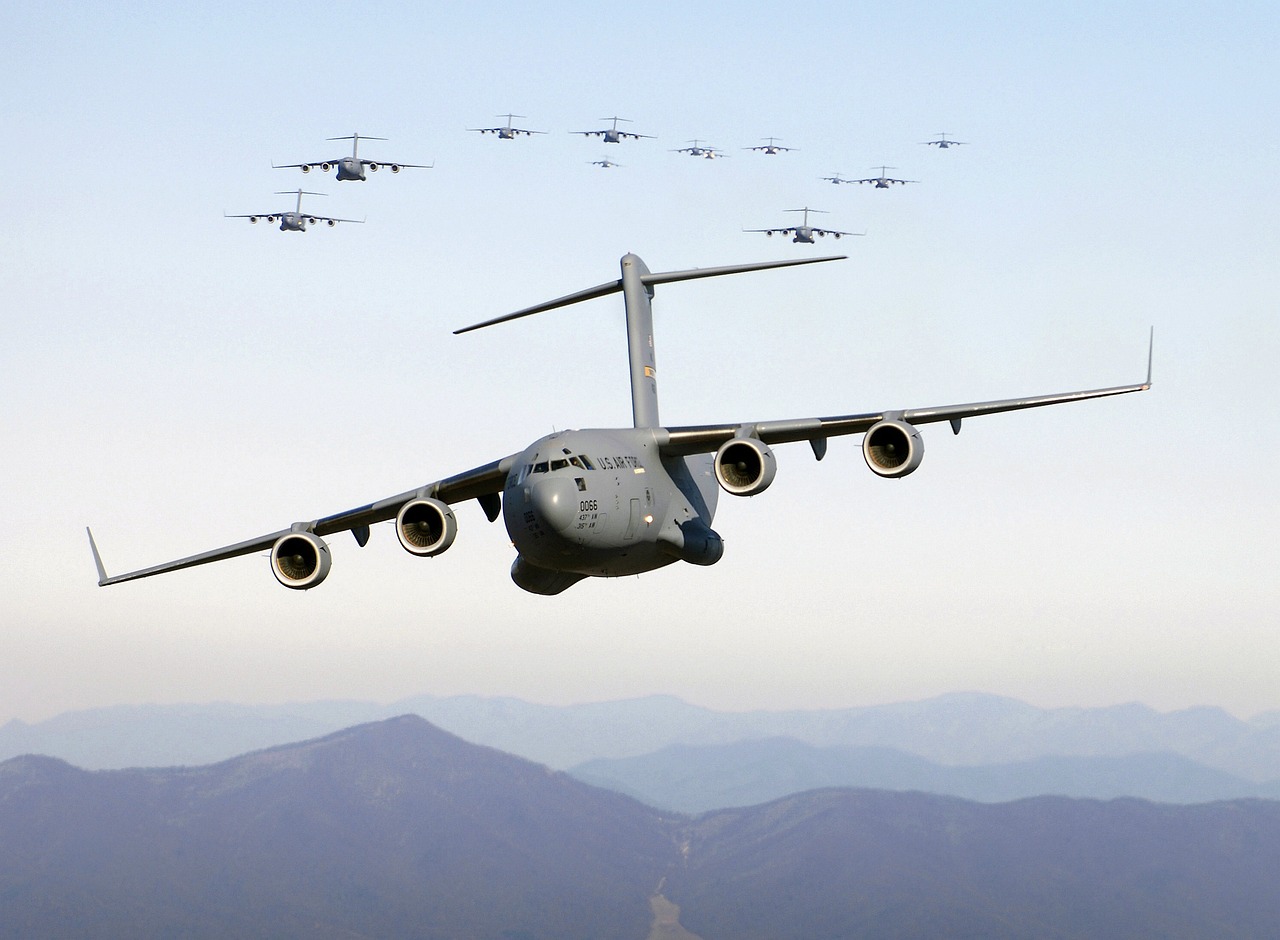
Ground Vehicle Innovations
The landscape of military logistics is undergoing a dramatic transformation, thanks to groundbreaking innovations in ground transport technologies. These advancements are not just about improving existing vehicles; they are about reimagining how military forces deploy, maneuver, and operate in the field. With the integration of cutting-edge technology, the military is now equipped with vehicles that are not only faster and more efficient but also safer and more adaptable to various combat scenarios.
One of the most significant developments is the emergence of autonomous ground vehicles. Imagine a convoy of trucks that can navigate through treacherous terrain without a driver behind the wheel. This isn’t science fiction; it’s becoming a reality. Autonomous vehicles are designed to transport troops and supplies without direct human intervention, which drastically reduces the risk to human life in dangerous environments. They can be programmed to follow set routes or react to real-time data, making them incredibly versatile.
These vehicles are equipped with an array of sensors and artificial intelligence, allowing them to understand their surroundings and make decisions on the fly. The benefits of such technology are immense. For instance, in a combat zone, where every second counts, autonomous vehicles can deliver supplies or evacuate personnel without waiting for human drivers to navigate the chaos. This capability can significantly enhance operational efficiency and effectiveness.
Let's break down some of the key advantages of implementing autonomous ground vehicles in military operations:
- Reduced Risk: By minimizing human presence in high-risk areas, these vehicles protect soldiers from potential threats.
- Increased Efficiency: Autonomous vehicles can operate around the clock without the need for rest, ensuring continuous supply lines.
- Adaptability: They can be deployed in hazardous environments where traditional vehicles might struggle, such as areas with explosive devices or extreme weather conditions.
However, the road to widespread adoption of autonomous ground vehicles is not without its bumps. Several challenges need to be addressed:
- Technological Limitations: While the technology is advancing rapidly, there are still hurdles to overcome regarding reliability and robustness in unpredictable environments.
- Regulatory Hurdles: Military regulations and standards must adapt to accommodate these new technologies, which can be a slow process.
- Cybersecurity Concerns: As these vehicles become more connected, they become more vulnerable to cyber attacks, necessitating strong security measures.
In addition to autonomous vehicles, there are also enhanced mobility solutions that are reshaping ground transport. All-terrain vehicles and modular transport systems are making it easier for military forces to adapt to diverse operational environments. These vehicles can traverse difficult landscapes, from deserts to forests, and can be configured to carry different types of payloads, making them incredibly versatile.
Ultimately, the innovations in ground vehicle technologies are not just about machinery; they represent a fundamental shift in how military logistics are approached. With the ability to deploy resources more effectively and safely, military forces can maintain a strategic advantage in modern warfare. As these technologies continue to evolve, they will undoubtedly play a critical role in shaping the future of military operations.
Q1: What are autonomous ground vehicles?
A1: Autonomous ground vehicles are military transport units that can operate without direct human control, using sensors and AI to navigate and complete missions.
Q2: How do these innovations improve military logistics?
A2: They enhance efficiency, reduce risks to personnel, and allow for faster and safer transport of supplies and troops in various environments.
Q3: What challenges do autonomous vehicles face?
A3: Key challenges include technological limitations, regulatory hurdles, and cybersecurity concerns that need to be addressed for effective implementation.

Autonomous Ground Vehicles
In the realm of military transport, are not just a futuristic concept; they're becoming a reality that is reshaping how logistics and operations are conducted on the battlefield. Imagine a convoy of vehicles that can maneuver through treacherous terrains without a driver behind the wheel. This is the promise of autonomous technology, which leverages advanced sensors, artificial intelligence, and machine learning to navigate complex environments. By integrating these technologies, military forces can achieve unprecedented levels of efficiency and safety in transporting troops and supplies.
One of the most significant advantages of autonomous ground vehicles is their ability to operate in hazardous conditions. In combat zones where the risk of ambush or enemy fire is high, deploying unmanned vehicles can significantly reduce the danger to human life. These vehicles can be programmed to carry out missions such as resupply runs or reconnaissance without putting soldiers at risk. Think of them as the unsung heroes of modern warfare, bravely venturing into danger while keeping personnel safe.
However, the implementation of autonomous ground vehicles isn't without its challenges. For starters, there are technological hurdles to overcome, including the need for robust navigation systems that can function in GPS-denied environments. Furthermore, the military must navigate regulatory frameworks that govern the use of unmanned systems, ensuring compliance with national and international laws. On top of that, cybersecurity becomes a paramount concern; after all, an autonomous vehicle that can be hacked poses a significant threat not only to the mission but also to the lives of military personnel.
Despite these challenges, the potential benefits of autonomous ground vehicles are too significant to ignore. They can operate around the clock, providing logistical support without the need for rest or breaks. This capability allows military forces to maintain a steady flow of supplies and personnel, which is crucial for operational readiness. Moreover, the data gathered by these vehicles can be analyzed to improve future missions, creating a feedback loop that enhances overall effectiveness.
To illustrate the impact of autonomous ground vehicles, consider the following table that highlights their key features and benefits:
| Feature | Benefit |
|---|---|
| Unmanned Operation | Reduces risk to human life |
| 24/7 Availability | Ensures continuous supply flow |
| Advanced Navigation | Can operate in challenging terrains |
| Data Collection | Improves future mission planning |
As military forces around the globe continue to explore the capabilities of autonomous ground vehicles, the landscape of warfare is set to change dramatically. With the ability to enhance operational readiness and reduce risks, these vehicles are paving the way for a new era in military logistics. The question remains: how quickly can these technologies be adopted, and what will the future of military transport look like?
- What are autonomous ground vehicles? Autonomous ground vehicles are unmanned vehicles that can navigate and operate without human intervention, using advanced technologies like AI and sensors.
- How do autonomous vehicles enhance military operations? They improve safety by reducing the risk to human life, increase operational efficiency, and allow for missions in hazardous environments.
- What challenges do autonomous vehicles face? Challenges include technological limitations, regulatory hurdles, and cybersecurity risks.
- Can autonomous vehicles operate in all terrains? While they are designed to handle various terrains, their effectiveness can be limited in GPS-denied environments without robust navigation systems.

Benefits of Autonomy
The rise of autonomous ground vehicles in military transport is not just a trend—it's a game changer. These vehicles offer a myriad of benefits that enhance operational efficiency and safety in combat zones. Imagine a scenario where supplies and personnel can be transported without the constant need for human oversight. This is not science fiction; it’s the reality that autonomy brings to the battlefield.
One of the most significant advantages of autonomous vehicles is the reduction of risk to human life. By allowing machines to take on dangerous transport duties, military personnel can focus on more critical tasks, thereby enhancing overall mission success. For instance, consider a convoy traveling through hostile territory. An autonomous vehicle can scout ahead, detect threats, and navigate through obstacles, all while keeping soldiers safe. This capability is particularly crucial in environments where ambushes and IEDs (improvised explosive devices) are prevalent.
Moreover, the operational efficiency of autonomous vehicles cannot be overstated. These vehicles can operate around the clock without the need for breaks, food, or rest. This continuous operation means that supplies can be delivered faster and more reliably. For example, an autonomous supply truck can make multiple trips in a day, ensuring that frontline troops receive the necessary equipment and provisions without delay. The speed of delivery becomes a decisive factor in modern warfare, where every second counts.
Another compelling benefit is the ability to deploy autonomous vehicles in hazardous environments. Traditional vehicles may struggle in challenging terrains, such as rugged mountains or urban landscapes filled with debris. Autonomous systems, equipped with advanced sensors and AI algorithms, can adapt to these conditions, ensuring that missions are carried out effectively. This adaptability is crucial for maintaining supply lines and ensuring that troops have the resources they need, regardless of the environment.
Additionally, the integration of autonomous vehicles can lead to substantial cost savings. While the initial investment in technology may be high, the long-term savings from reduced personnel costs, lower insurance premiums, and decreased vehicle maintenance can be significant. Military budgets are often stretched thin, and finding ways to do more with less is essential. Autonomous vehicles can help bridge that gap, allowing for more efficient use of resources.
However, it’s important to acknowledge that the transition to autonomous systems is not without challenges. Issues such as technological limitations, regulatory hurdles, and cybersecurity threats must be addressed. Yet, the potential benefits far outweigh these challenges, making the push for autonomy in military transport not just beneficial but essential for future warfare.
- What are autonomous ground vehicles?
Autonomous ground vehicles are self-operating machines designed to transport supplies and personnel without human intervention. - How do autonomous vehicles enhance safety?
By taking on dangerous transport roles, autonomous vehicles reduce the risk to human life, allowing military personnel to focus on critical tasks. - Can autonomous vehicles operate in all terrains?
Yes, equipped with advanced sensors and AI, they can adapt to various challenging environments, ensuring effective mission execution. - What are the cost implications of using autonomous vehicles?
While the initial investment may be high, long-term savings from reduced personnel costs and maintenance can be substantial.

Challenges to Implementation
The integration of autonomous ground vehicles into military transport systems presents a fascinating yet complex challenge. While the benefits of these innovations are clear—enhanced safety, improved efficiency, and the ability to operate in hazardous environments—the road to widespread adoption is fraught with obstacles. One of the primary challenges is the technological limitations that currently exist. Despite significant advancements, issues such as sensor reliability, navigation in unpredictable terrains, and real-time decision-making capabilities still need to be addressed. Imagine trying to navigate a dense forest or a bustling urban environment without a human touch; it’s a daunting task!
Moreover, there are regulatory hurdles that complicate the deployment of these vehicles. Military operations are governed by strict protocols and regulations, which can slow down the integration process. The military must ensure that autonomous systems comply with existing laws and regulations, which can vary significantly from one region to another. This not only adds layers of complexity but also requires extensive testing and validation to ensure that these vehicles can operate safely alongside human-operated units.
Another critical challenge is the need for robust cybersecurity measures. As military transport increasingly relies on interconnected systems, the risk of cyber attacks escalates. Autonomous vehicles, like any other technology, can be vulnerable to hacking, which could compromise missions and endanger lives. The military must invest heavily in cybersecurity to protect these systems from potential threats, ensuring that they remain secure and operational in the face of evolving cyber warfare tactics.
In summary, while the potential of autonomous ground vehicles in military transport is immense, the path to implementation is laden with challenges. Addressing technological limitations, navigating regulatory landscapes, and fortifying cybersecurity measures are essential steps that must be taken to realize the full potential of these innovative systems.
- What are autonomous ground vehicles? Autonomous ground vehicles are unmanned vehicles designed to transport supplies and personnel without direct human intervention.
- What are the main benefits of using autonomous vehicles in the military? They enhance safety, improve operational efficiency, and can operate in environments that may be too dangerous for human drivers.
- What challenges do military organizations face in implementing autonomous vehicles? Key challenges include technological limitations, regulatory hurdles, and cybersecurity risks.
- How does cybersecurity affect the use of autonomous vehicles? Autonomous vehicles are vulnerable to cyber attacks, necessitating strong cybersecurity measures to protect military operations.

Enhanced Mobility Solutions
When it comes to modern military operations, mobility is the name of the game. Enhanced mobility solutions are revolutionizing how military forces adapt to ever-changing environments. Imagine a battlefield where troops can maneuver seamlessly across various terrains, from rugged mountains to urban landscapes. This is not just a dream; it's becoming a reality thanks to cutting-edge technology. One of the standout innovations is the development of all-terrain vehicles (ATVs) that can traverse difficult landscapes with ease. These vehicles are designed to provide unparalleled access to remote areas, ensuring that military personnel can reach their objectives without delay.
Moreover, modular transport systems are gaining traction as they offer the flexibility to customize vehicles based on mission requirements. This adaptability is crucial during operations where conditions can shift in a heartbeat. For instance, a vehicle can be equipped with additional armor for protection during a combat mission, or it can be configured for rapid troop transport during humanitarian efforts. The ability to modify these systems on-the-fly is a game-changer.
In addition to ATVs and modular systems, the integration of advanced navigation technologies plays a vital role in enhancing mobility. GPS and real-time mapping systems allow military units to navigate complex terrains efficiently. The combination of these technologies not only boosts operational readiness but also minimizes the risk of getting lost or ambushed in unfamiliar territories.
Another exciting development is the use of unmanned ground vehicles (UGVs) that can be deployed for reconnaissance missions. These robotic systems can scout ahead, gather intelligence, and even transport supplies without putting human lives at risk. The incorporation of UGVs into military logistics is a testament to how technology is reshaping traditional transport methods.
However, with all these advancements come challenges. The need for training and maintenance of these sophisticated systems cannot be overlooked. Military personnel must be well-versed in operating these advanced vehicles to maximize their potential. Additionally, ensuring that these systems are kept in optimal condition is crucial for maintaining operational efficiency.
In summary, enhanced mobility solutions are transforming military logistics by providing forces with the tools they need to respond effectively to various operational demands. As technology continues to evolve, we can expect even more innovative solutions that will further enhance the agility and responsiveness of military operations.
- What are all-terrain vehicles (ATVs) used for in the military?
ATVs are designed to navigate difficult terrains, ensuring troops can access remote areas quickly and efficiently. - How do modular transport systems enhance military operations?
Modular systems allow for customization based on mission requirements, providing flexibility in various operational scenarios. - What role do unmanned ground vehicles (UGVs) play in logistics?
UGVs can perform reconnaissance and transport supplies without risking human lives, making them invaluable in modern warfare. - What are the challenges associated with enhanced mobility solutions?
Challenges include the need for extensive training and maintenance of advanced vehicles to ensure operational efficiency.
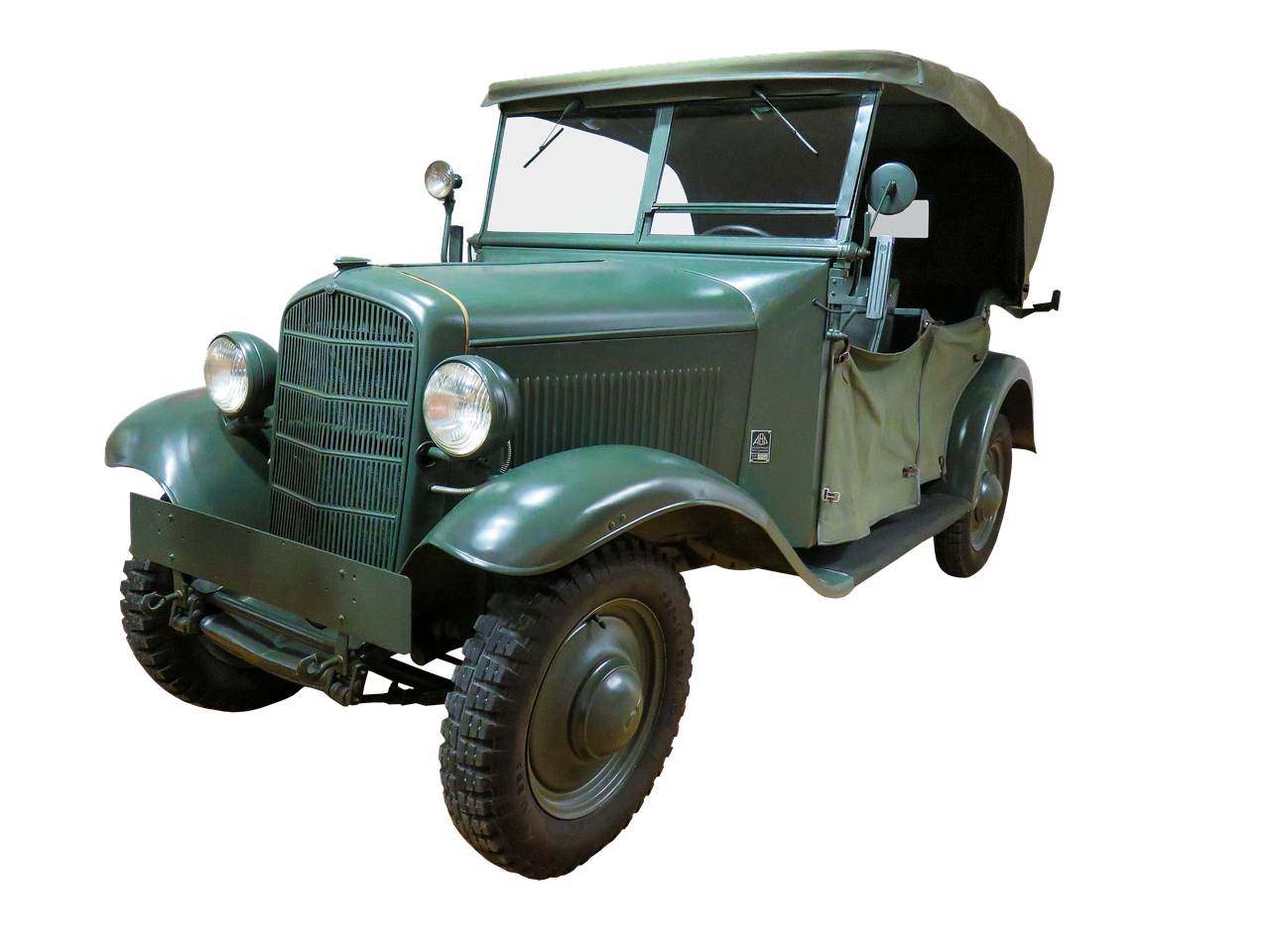
Maritime Transport Innovations
In the realm of military logistics, have become a cornerstone for enhancing operational capabilities. The ability to project power across vast oceans is not just about having a strong navy; it's about leveraging cutting-edge technologies that enable seamless movement of troops and equipment. Whether it’s through the introduction of amphibious vehicles or advancements in naval cargo systems, these innovations are transforming how military forces operate in coastal and maritime environments.
One of the most significant breakthroughs in maritime transport is the development of amphibious assault vehicles. These versatile machines are engineered to transition effortlessly between land and water, providing military forces with unparalleled flexibility. Imagine a vehicle that can land on a beach, unload troops, and then navigate back to sea—all in a matter of minutes. This capability allows for rapid deployment in coastal operations, making it easier for forces to establish a foothold in hostile territories.
Moreover, the evolution of naval cargo systems cannot be overlooked. Innovations such as automated loading and unloading technologies are revolutionizing how supplies are managed on naval vessels. Traditional methods can be labor-intensive and time-consuming, but with the advent of automation, these processes have been streamlined. For instance, automated cranes can load containers onto ships in a fraction of the time it would take human workers, thereby enhancing overall efficiency. The integration of these systems not only speeds up logistics but also reduces the risk of human error.
To illustrate the impact of these innovations, consider the following table that compares traditional maritime transport methods with modern innovations:
| Feature | Traditional Methods | Modern Innovations |
|---|---|---|
| Deployment Speed | Slow; reliant on manual processes | Fast; automated systems enhance efficiency |
| Flexibility | Limited; specific to water or land | High; amphibious vehicles can operate in both |
| Human Resource Requirement | High; many personnel needed for operations | Lower; automation reduces manpower needs |
| Error Rate | Higher; prone to human error | Lower; automation minimizes mistakes |
As we look toward the future, it’s clear that maritime transport innovations are not just enhancing logistics but are also integral to maintaining operational readiness. These technological advancements ensure that military forces can respond swiftly and effectively to emerging threats, whether they arise from land or sea. The ability to transport troops and equipment efficiently can be the difference between success and failure in military operations, making these innovations crucial in the ever-evolving landscape of modern warfare.
- What are amphibious assault vehicles?
Amphibious assault vehicles are specialized military vehicles designed to operate on both land and water, allowing for versatile troop deployment in coastal operations. - How do automated naval cargo systems improve efficiency?
Automated naval cargo systems streamline the loading and unloading processes, significantly reducing the time and labor required compared to traditional methods. - Why are maritime transport innovations important for military operations?
These innovations enhance logistical capabilities, allowing for quicker deployment of forces and resources, which is critical in responding to threats.

Amphibious Assault Vehicles
Amphibious assault vehicles (AAVs) represent a remarkable fusion of engineering and military strategy, designed to conquer both land and water with unparalleled versatility. Imagine a vehicle that can seamlessly transition from navigating the turbulent waves of the ocean to traversing rugged terrain on land; that’s the essence of AAVs. These vehicles are not just tools; they are lifelines for military forces, enabling them to project power and execute operations in coastal environments where traditional vehicles would falter.
One of the standout features of AAVs is their ability to carry troops and equipment directly from ship to shore, significantly reducing the time needed to establish a foothold in hostile territories. This capability is especially critical during amphibious assaults, where speed and surprise can make the difference between success and failure. For instance, during historical operations such as the Normandy landings in World War II, the ability to deploy forces rapidly and effectively from ships to beaches was pivotal. Today's AAVs are equipped with advanced technology, including GPS navigation and enhanced communication systems, allowing for real-time coordination and strategic planning.
Moreover, AAVs are designed with robust armor to protect personnel from enemy fire and shrapnel, enhancing the safety of troops during landings. The integration of amphibious capabilities means they can launch directly from naval vessels, navigate through surf zones, and drive ashore, all while providing cover for disembarking troops. This dual capability is crucial in modern warfare, where operations often require flexibility and adaptability. As military strategies evolve, the role of AAVs continues to expand, incorporating new technologies such as hybrid propulsion systems and automated controls, which further enhance their effectiveness.
However, the development and deployment of AAVs are not without challenges. The design must balance buoyancy and stability in water with the need for speed and maneuverability on land. Furthermore, the logistics of maintaining and transporting these vehicles require careful planning and resources. Despite these challenges, the ongoing innovations in AAV technology promise to redefine how military operations are conducted in coastal and riverine environments.
In conclusion, amphibious assault vehicles are a testament to the ingenuity of military engineering, combining the best of both worlds—land and sea. They not only provide tactical advantages but also symbolize the evolution of military transport technologies, ensuring that armed forces remain agile, responsive, and ready to face the complexities of modern warfare.
- What are amphibious assault vehicles used for? AAVs are primarily used to transport troops and equipment from ships to shore, enabling military operations in coastal areas.
- How do amphibious assault vehicles transition from water to land? AAVs are designed with specialized propulsion systems that allow them to operate on both land and water, making them versatile for various terrains.
- What advancements are being made in amphibious assault vehicle technology? Recent innovations include enhanced armor, hybrid propulsion systems, and improved communication technologies for better operational effectiveness.

Naval Cargo Systems
The evolution of is a game-changer for military logistics, ensuring that supplies and equipment are delivered swiftly and efficiently across vast oceans. With the increasing complexity of modern warfare, the demand for innovative solutions that streamline maritime operations has never been greater. Today’s naval forces are equipped with advanced technologies that not only enhance operational capabilities but also significantly reduce the time and effort required to transport materials.
One of the key advancements in naval cargo systems is the integration of automated loading and unloading technologies. These systems utilize robotics and artificial intelligence to facilitate the swift transfer of cargo from ships to shore and vice versa. Imagine a scenario where a naval vessel arrives at a port and, within minutes, is unloaded without the need for extensive manpower. This not only speeds up the process but also minimizes the risk of human error and enhances safety.
Moreover, the implementation of modular cargo containers has transformed how military supplies are organized and transported. These containers can be easily adapted for various types of cargo, whether it’s ammunition, medical supplies, or equipment. This flexibility allows for a more efficient use of space on naval vessels, maximizing their carrying capacity. With modular designs, the military can quickly respond to changing operational needs, ensuring that the right supplies are available when and where they are needed.
Additionally, the use of real-time tracking systems in naval cargo operations has revolutionized how military logistics are managed. These systems provide commanders with up-to-the-minute information about the location and status of cargo, allowing for better planning and resource allocation. For instance, if a supply shipment is delayed, military planners can quickly adjust their strategies to ensure that troops on the ground are not left without necessary resources. This level of visibility and control is crucial in high-stakes environments where every second counts.
In summary, the advancements in naval cargo systems are not just about moving goods from point A to point B; they represent a fundamental shift in how military operations are conducted. With automated technologies, modular containers, and real-time tracking, modern naval forces are better equipped to project power and respond to threats. As these innovations continue to develop, we can expect even greater improvements in efficiency and effectiveness in military logistics.
- What are naval cargo systems?
Naval cargo systems refer to the technologies and methods used to transport military supplies and equipment via naval vessels, ensuring efficient logistics and support for maritime operations. - How do automated loading systems work?
Automated loading systems utilize robotics and AI to facilitate the transfer of cargo, reducing the need for manual labor and speeding up the unloading process. - What is the benefit of modular cargo containers?
Modular cargo containers offer flexibility and adaptability for transporting various types of supplies, optimizing space and improving logistical efficiency. - Why is real-time tracking important in military logistics?
Real-time tracking allows for enhanced visibility over cargo status and location, enabling better planning and response to logistical challenges.
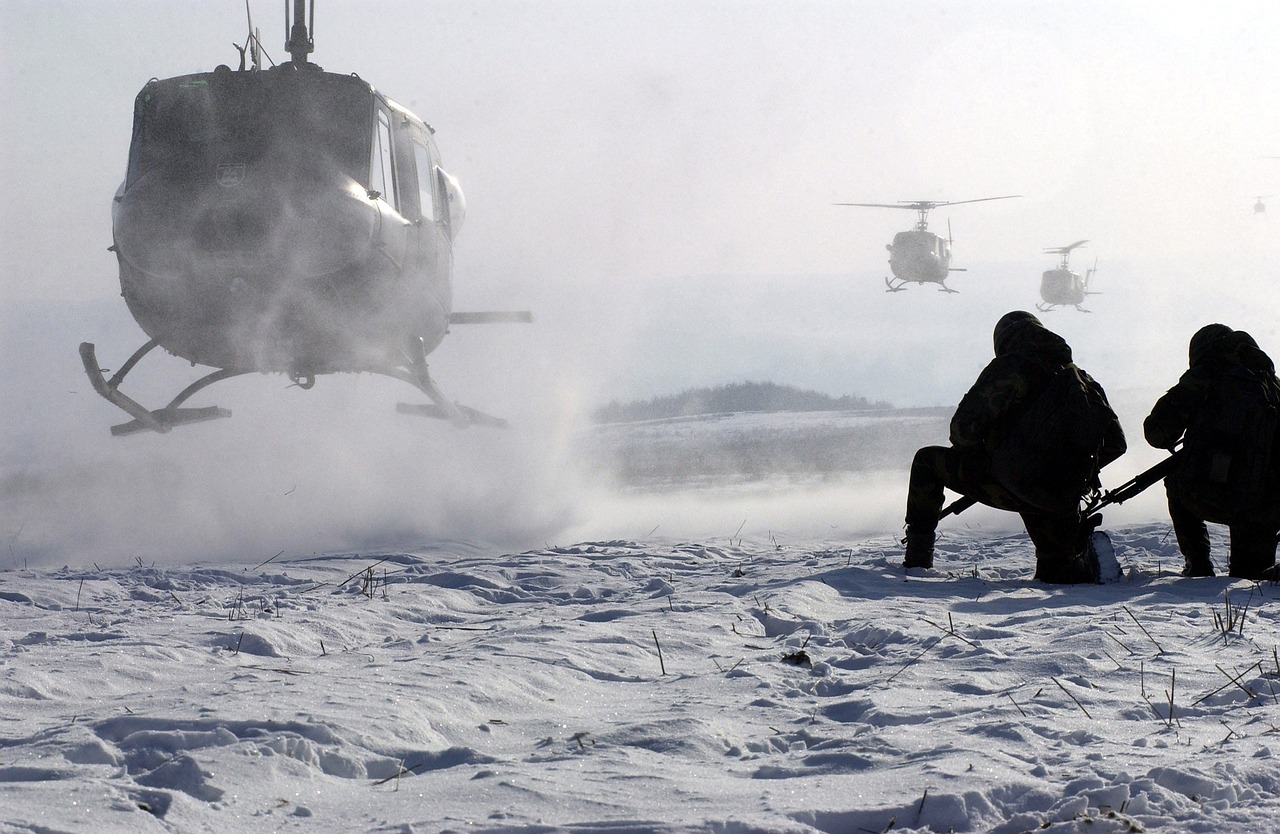
Logistics and Supply Chain Management
Effective logistics and supply chain management are the backbone of military operations, ensuring that troops are equipped with the necessary resources to perform their missions successfully. In the fast-paced environment of modern warfare, where every second counts, the ability to rapidly deploy supplies and equipment can mean the difference between victory and defeat. With the advent of new technologies, military logistics have transformed into highly sophisticated systems that are capable of adapting to the ever-changing landscape of conflict.
One of the most significant advancements in this area is the implementation of real-time tracking systems. These systems utilize GPS and satellite technology to provide commanders with up-to-the-minute information on the location and status of supplies and equipment. Imagine being able to pinpoint the exact location of every piece of gear, from ammunition to medical supplies, as they move through the supply chain. This level of visibility not only enhances operational readiness but also allows for better decision-making in critical situations.
Moreover, the integration of data analytics into military logistics is revolutionizing how supply chains are managed. By analyzing vast amounts of data, military planners can identify trends, predict future needs, and optimize inventory levels. This proactive approach helps prevent shortages and ensures that resources are allocated where they are most needed. For instance, if data indicates an upcoming surge in troop deployments, logistics teams can ramp up supply deliveries in anticipation, thereby maintaining operational efficiency.
| Technology | Description | Impact on Logistics |
|---|---|---|
| Real-Time Tracking Systems | Utilizes GPS and satellite technology for asset visibility. | Enhances decision-making and operational readiness. |
| Data Analytics | Analyzes data to predict supply needs and optimize inventory. | Prevents shortages and improves resource allocation. |
| Automated Inventory Management | Automates tracking and management of supplies. | Increases efficiency and reduces human error. |
In addition to these technologies, the military is also focusing on automated inventory management systems. These systems streamline the process of tracking and managing supplies, reducing the likelihood of human error and ensuring that resources are accounted for at all times. By automating mundane tasks, logistics personnel can focus on strategic planning and execution, ultimately improving the overall effectiveness of military operations.
However, the integration of these advanced technologies is not without its challenges. There are significant hurdles to overcome, including the need for robust cybersecurity measures to protect sensitive data and systems from potential threats. As military operations become increasingly reliant on technology, ensuring the security and integrity of logistics systems is paramount.
In conclusion, the landscape of military logistics and supply chain management is evolving rapidly, driven by technological advancements that enhance efficiency, visibility, and operational readiness. As the military continues to adapt to new challenges, the importance of effective logistics cannot be overstated. With the right tools and strategies in place, armed forces can ensure they are always ready to respond to any situation, maintaining their edge in modern warfare.
- What role does technology play in military logistics?
Technology enhances visibility, efficiency, and decision-making in military logistics, allowing for timely delivery of supplies and equipment. - How do real-time tracking systems benefit military operations?
They provide commanders with up-to-date information on supplies, improving operational readiness and enabling better decision-making. - What are the challenges in implementing automated inventory management?
Challenges include ensuring data security and overcoming technological limitations, as well as training personnel to adapt to new systems.
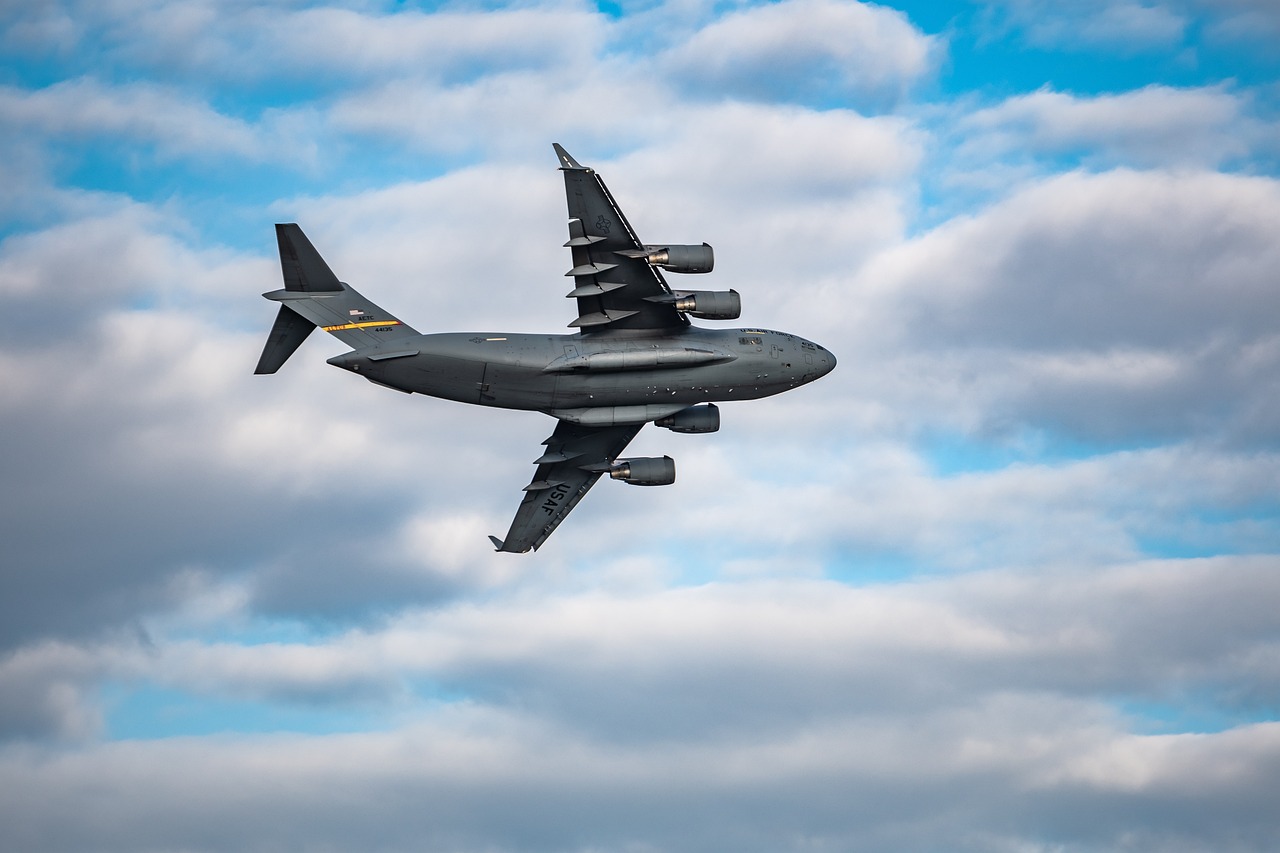
Real-Time Tracking Systems
In the fast-paced world of military operations, have emerged as a game-changer, ensuring that military assets are monitored and managed effectively. Imagine being able to pinpoint the exact location of every piece of equipment and every troop deployment at any given moment. This level of visibility is crucial, especially when lives are at stake and operational efficiency is paramount. With advancements in GPS technology, satellite communications, and data analytics, military forces can now achieve unprecedented levels of situational awareness.
These systems utilize a combination of hardware and software solutions to provide real-time data on the movement and status of military assets. For instance, GPS-enabled devices can relay information about the location of vehicles, supplies, and personnel directly to command centers. This capability allows military planners to make informed decisions quickly, ensuring that resources are allocated efficiently and effectively. Moreover, the integration of real-time tracking with other technologies, such as drones and autonomous vehicles, further enhances operational capabilities.
One of the standout features of these tracking systems is their ability to provide insights into logistics and supply chain management. By analyzing data collected from various sources, military leaders can forecast needs, optimize routes, and reduce delays. For example, if a convoy is delayed due to unexpected terrain challenges, real-time tracking can facilitate a rapid response, rerouting supplies to ensure they arrive on time. This adaptability is crucial in combat situations where every second counts.
However, the implementation of real-time tracking systems is not without its challenges. There are concerns regarding data security and the potential for adversaries to intercept sensitive information. Therefore, robust cybersecurity measures must be established to protect these systems from cyber threats. Additionally, the reliance on technology raises questions about redundancy; in the event of a system failure, alternative methods must be in place to ensure that operations can continue smoothly.
To illustrate the impact of real-time tracking systems, consider the following table, which outlines key benefits:
| Benefit | Description |
|---|---|
| Enhanced Visibility | Provides real-time data on asset locations, improving situational awareness. |
| Improved Efficiency | Optimizes resource allocation and reduces delays in supply delivery. |
| Data-Driven Decisions | Enables military leaders to make informed decisions based on accurate data. |
| Increased Safety | Reduces risks by allowing for better planning and response to threats. |
In conclusion, real-time tracking systems are revolutionizing military logistics and operational readiness. By leveraging cutting-edge technology, these systems not only enhance efficiency but also ensure that military forces can respond swiftly to dynamic situations. As technology continues to evolve, the potential for even greater advancements in tracking capabilities will only increase, further solidifying their importance in modern warfare.
- What are real-time tracking systems?
These systems are technologies that provide instantaneous data on the location and status of military assets, enhancing situational awareness and operational efficiency. - How do real-time tracking systems improve military operations?
They allow for better resource allocation, timely deliveries, and informed decision-making, which are critical in combat scenarios. - What challenges do real-time tracking systems face?
Challenges include data security concerns, potential system failures, and the need for robust cybersecurity measures. - Can real-time tracking systems be integrated with other technologies?
Yes, they can be integrated with drones, autonomous vehicles, and other logistics technologies to enhance operational capabilities.
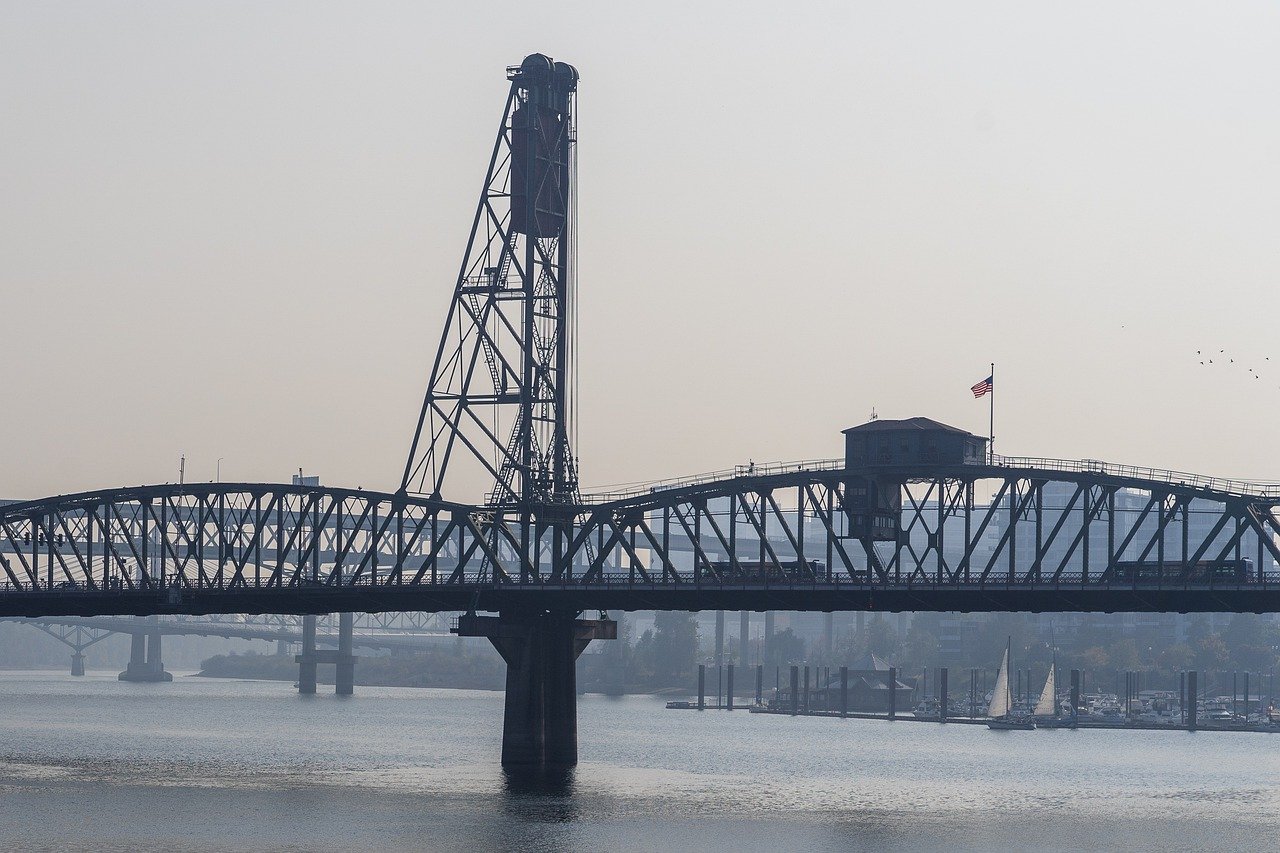
Data Analytics in Logistics
In the modern battlefield, the effectiveness of military operations is heavily reliant on data analytics. As logistics become increasingly complex, the need for precise and timely information has never been more critical. Data analytics in logistics enables military planners to transform vast amounts of data into actionable insights, ultimately enhancing operational readiness and efficiency. By leveraging advanced analytical tools, military organizations can predict supply needs, optimize routes, and improve inventory management.
Imagine a scenario where a military unit is deployed in a remote area. Without proper logistics, they could face shortages of essential supplies, leading to dire consequences. This is where data analytics steps in, acting as the backbone of military logistics. By analyzing historical data, current inventory levels, and projected needs, military planners can forecast supply requirements with remarkable accuracy. This predictive capability not only ensures that troops have what they need when they need it but also minimizes waste and reduces costs.
One of the key benefits of data analytics is its ability to enhance visibility across the supply chain. With real-time data tracking, military logistics teams can monitor the status of supplies and equipment at any given moment. This visibility allows for quicker responses to potential disruptions, such as delays or unexpected demand spikes. For instance, if a particular unit requires additional ammunition due to an unforeseen engagement, data analytics can facilitate rapid resupply by identifying the closest available resources and optimizing delivery routes.
Additionally, data analytics can significantly improve decision-making processes. By utilizing predictive modeling, military planners can simulate various scenarios and assess their potential impacts. This capability is invaluable when it comes to planning logistics for large-scale operations, where multiple variables can affect outcomes. By analyzing different scenarios, decision-makers can choose the most efficient and effective logistical strategies, ultimately enhancing mission success rates.
Furthermore, the integration of machine learning and artificial intelligence (AI) into logistics data analytics is paving the way for even more sophisticated solutions. These technologies can identify patterns and trends in data that may not be immediately apparent to human analysts. For example, AI can analyze past supply chain disruptions and suggest preventative measures based on historical outcomes. This proactive approach to logistics not only saves time but also enhances the overall resilience of military operations.
To illustrate the impact of data analytics in logistics, consider the following table showcasing key benefits:
| Benefit | Description |
|---|---|
| Enhanced Forecasting | Improves accuracy in predicting supply needs based on historical data. |
| Real-Time Visibility | Allows for monitoring of supplies and equipment status at any moment. |
| Informed Decision-Making | Facilitates better planning through predictive modeling and scenario analysis. |
| Proactive Risk Management | Identifies potential disruptions and suggests preventative measures. |
In conclusion, data analytics is revolutionizing military logistics by providing the tools needed to navigate the complexities of modern warfare. With its ability to enhance forecasting, improve visibility, and facilitate informed decision-making, data analytics is not just a luxury; it has become a necessity for operational success. As technology continues to evolve, we can expect even greater advancements in the way military logistics are managed, ensuring that our forces are always ready to respond to any challenge.
- What is data analytics in military logistics?
Data analytics in military logistics refers to the use of data analysis tools and techniques to optimize supply chain operations, improve forecasting, and enhance decision-making processes.
- How does data analytics improve operational readiness?
By providing real-time visibility and accurate forecasting, data analytics ensures that military units have the supplies they need at the right time, thereby enhancing overall operational readiness.
- What technologies are used in military logistics data analytics?
Technologies such as machine learning, artificial intelligence, and predictive modeling are commonly used to analyze data and optimize logistics processes.
- Can data analytics help in risk management?
Yes, data analytics can identify potential risks and disruptions in the supply chain, allowing military planners to take proactive measures to mitigate these risks.
Frequently Asked Questions
- What are the latest advancements in aerial transport technologies for military use?
Aerial transport technologies have seen significant advancements, particularly with the integration of drones and advanced cargo aircraft. These innovations enhance the speed and efficiency of military operations, allowing forces to quickly deploy supplies and personnel across various terrains, making them invaluable in modern warfare.
- How are autonomous ground vehicles changing military logistics?
Autonomous ground vehicles are revolutionizing military logistics by enabling safer and more efficient movement of troops and supplies without direct human intervention. This technology not only reduces the risk to human life but also increases operational efficiency, especially in hazardous environments where traditional vehicles may struggle.
- What challenges do autonomous vehicles face in military applications?
Despite their numerous benefits, the implementation of autonomous vehicles in military transport faces several challenges. These include technological limitations, regulatory hurdles, and the critical need for robust cybersecurity measures to protect against potential threats.
- What role do amphibious assault vehicles play in military operations?
Amphibious assault vehicles are designed to operate seamlessly on both land and water, providing military forces with the versatility needed for coastal operations. Their unique capabilities allow for efficient troop and equipment deployment, making them essential for operations that require a swift response across different environments.
- How do real-time tracking systems enhance military logistics?
Real-time tracking systems significantly improve visibility and control over military assets. By ensuring timely delivery of supplies and equipment to the battlefield, these systems enhance overall operational readiness, allowing military planners to respond quickly to changing conditions.
- What is the importance of data analytics in military supply chain management?
Data analytics plays a crucial role in optimizing military supply chain operations. By utilizing predictive modeling and analysis, military planners can make informed decisions, streamline logistics, and improve inventory management, ultimately enhancing the efficiency and effectiveness of military operations.


